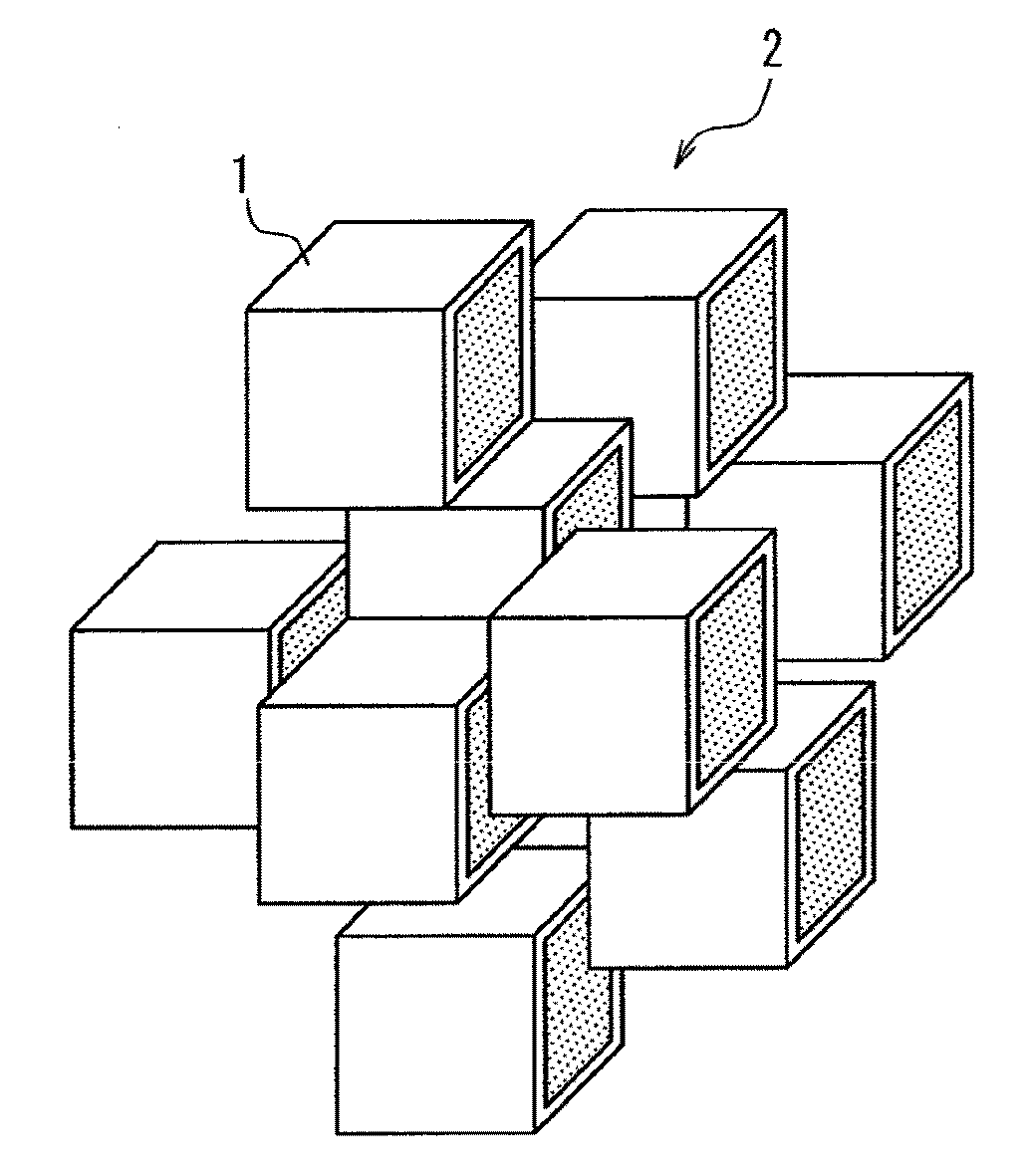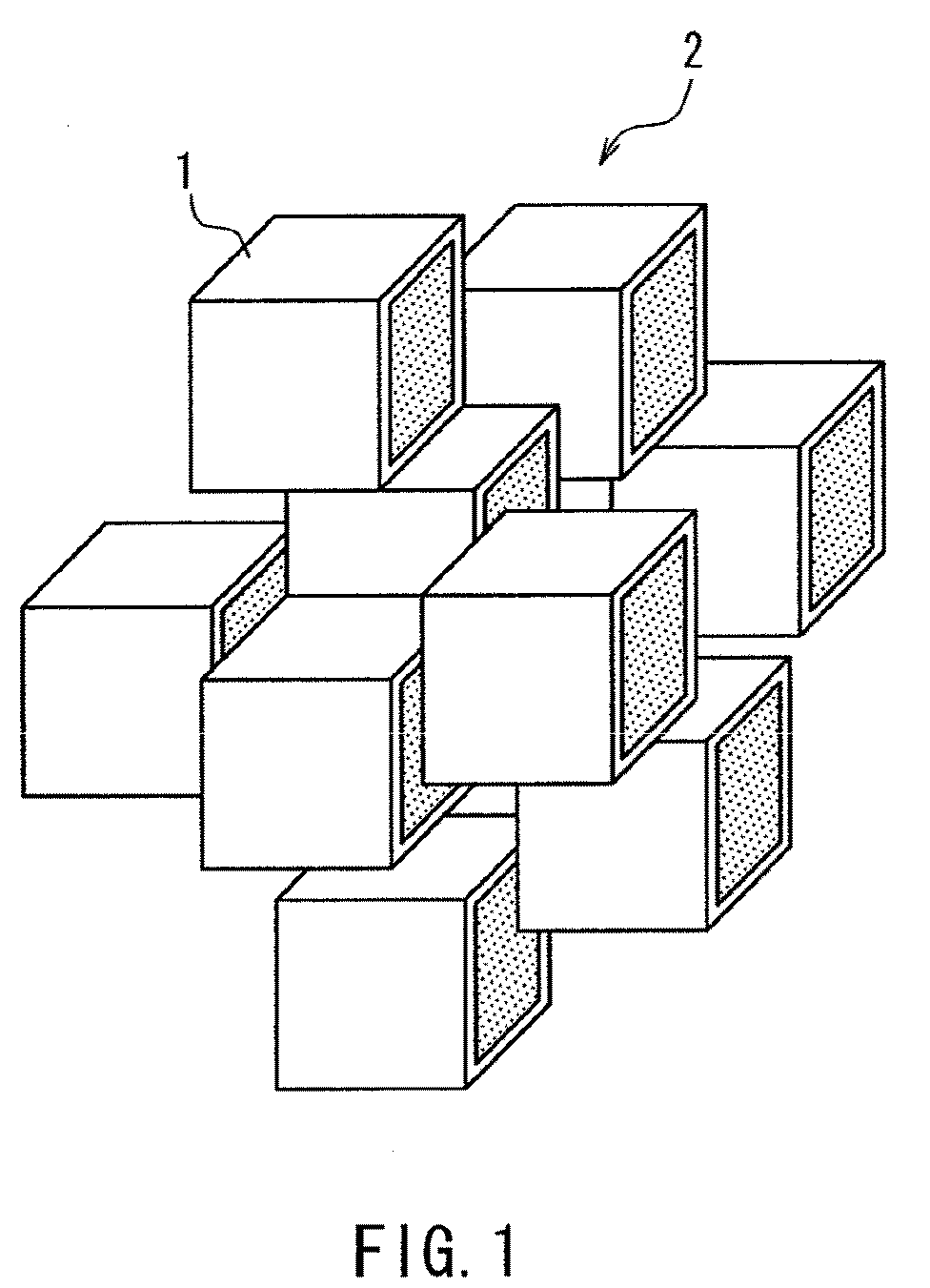Separator for electrochemical device, electrode for electrochemical device, and electrochemical device
a technology of electrochemical devices and separators, applied in the direction of cell components, final product manufacturing, sustainable manufacturing/processing, etc., can solve the problems of insufficient margin for securing battery safety, inability to say, and important issue of ensuring safety, etc., to achieve good reliability, good safety, and superior load characteristics
- Summary
- Abstract
- Description
- Claims
- Application Information
AI Technical Summary
Benefits of technology
Problems solved by technology
Method used
Image
Examples
manufacturing example 1
Production of Negative Electrode
[0165]A negative electrode material mixture-containing paste was prepared by uniformly mixing 95 parts by mass of graphite as a negative electrode active material and 5 parts by mass of PVDF as a binder with NMP as a solvent. This negative electrode material mixture-containing paste was applied intermittently onto both sides of a 101 μm thick current collector made of a copper foil such that the active material application length would be 320 mm on the surface and 260 mm on the undersurface, and then dried. After that, a calendering process was performed so as to adjust the total thickness of the negative electrode material mixture layer to 142 μm, and cutting was performed so as to bring the width thereof to 45 mm. Thus, a negative electrode having a length of 330 mm and a width of 45 mm was produced. Furthermore, a tab was welded to an exposed portion of the copper foil of the negative electrode to form a lead portion.
manufacturing example 2
Production of Positive Electrode
[0166]A positive electrode material mixture-containing paste was prepared by uniformly mixing 85 parts by mass of LiCoO2 as a positive electrode active material, 10 parts by mass of acetylene black as a conductive aid material and 5 parts by mass of PVDF as a binder with NMP as a solvent. This paste was intermittently applied onto both surfaces of a 15 μm thick aluminum foil, which would serve as a current collector, such that the active material application length would be 319 to 320 mm on the surface and 258 to 260 mm on the undersurface, and then dried. After that, a calendering process was performed so as to adjust the total thickness of the positive electrode material mixture layer to 150 μm, and cutting was performed so as to bring the width thereof to 43 mm. Thus, a positive electrode having a length of 330 mm and a width of 43 mm was produced. Furthermore, a tab was welded to an exposed portion of the aluminum foil of the positive electrode to...
example 1
Production of Separator for Electrochemical Device
[0167]A liquid composition (1-A) was prepared by dispersing 1000 g of boehmite having a secondary particle structure in which primary particles were connected (average particle size: 0.6 μm, specific surface area: 15 m2 / g, static bulk density: 0.2 g / cm3) in 1000 g of water, and adding and uniformly dispersing 120 g of SBR latex as an organic binder. The liquid composition (1-A) was combined with 2500 g of an aqueous dispersion of PE (average particle size: 1 μm, melting point: 125° C., solid content: 40%), and stirred until uniform to prepare a liquid composition (1-B). A melt blown non-woven fabric having a thickness of 15 μm and made of PP was put into and lifted from the liquid composition (1-B) to apply the liquid composition (1-B) to the non-woven fabric, and then dried, thereby obtaining a 20 μm thick porous film (separator for an electrochemical device) that contains the filler and resin A within the pores of the non-woven fab...
PUM
 Login to View More
Login to View More Abstract
Description
Claims
Application Information
 Login to View More
Login to View More - R&D
- Intellectual Property
- Life Sciences
- Materials
- Tech Scout
- Unparalleled Data Quality
- Higher Quality Content
- 60% Fewer Hallucinations
Browse by: Latest US Patents, China's latest patents, Technical Efficacy Thesaurus, Application Domain, Technology Topic, Popular Technical Reports.
© 2025 PatSnap. All rights reserved.Legal|Privacy policy|Modern Slavery Act Transparency Statement|Sitemap|About US| Contact US: help@patsnap.com


